A Quick Guide to Nearly Everything About Inbound Marketing ROI

ROI isn't just monetary returns.
Sometimes, your returns can be as simple as new content assets repurposed from existing podcast clips and then fed to other channels for wider visibility.
This guide finds out how companies view ROI today and shows you how to calculate the positive gains from your marketing efforts, along with the metrics to get you started.
- It's Not Always About The Money: What is ROI in Inbound Marketing?
- Top 5 KPIs / Metrics to Track Alongside ROI in Your Inbound Marketing Efforts
- Why Tracking Inbound Marketing ROI is Crucial (Real Stories from Brands)
- How to Create an Inbound Marketing Report on DashThis
- Automate Your Inbound Marketing ROI Report with DashThis Today
It's Not Always About The Money: What is ROI in Inbound Marketing?
DesignRush's podcast is going one year strong and here for the long haul.
The company is a marketplace that matches brands with agencies, which means it thinks about ROI slightly differently than a typical company does.
"We definitely monitor our podcast’s viewership,” says Gianluca Ferruggia, the General Manager. “But we know the ROI is beyond that.”
Ferruggia considers the following as ROI:
- Content assets that can be fed to other channels. Time savings and minimal efforts are also ROI. DesignRush repurposes every episode’s key takeaways into snippets for its social media channels and email newsletter, instead of starting from scratch.
- Great relationships with podcast guests. Rapport established. Connections made. DesignRush can easily count on this Rolodex of experts for future partnerships.
- Future episodes planning with zero guesswork. It’s easy to identify successful themes based on listenership. DesignRush can confidently plan future episodes and narrow down practitioners listeners want to hear more from.
Notice we haven’t touched on direct sales? 🙂
In this context, here’s how we define return on investment (ROI): the positive gains from a marketing campaign, regardless of monetary (e.g., revenue) or non-monetary returns (e.g., time savings).
What’s a good ROI for marketing?
A quick search shows a good ROI hovers at 5:1 ratio (e.g., $25,000 in revenue for every $5,000 spent).
Whereas an excellent ROI sits at around a 10:1 ratio. That's $100,000 in revenue for $10,000 spent!
An unprofitable ROI is anything below 2:1.
To calculate inbound marketing ROI:
Total revenue - marketing expenses / marketing expenses
Our advice?
Treat these ratios as a grain of salt.
Just as DesignRush has shown us, ROI depends on unique goals.
ROI also depends on other factors like:
- Overhead costs
- Profit margin
- Industry (note: Certain sectors boast higher ROI. For email marketing, ROI is highest in retail, ecommerce, and consumer goods [$45 per $1 spent]. Whereas telecommunications is lower at $21 per $1 spent).
- Type of marketing strategy (e.g., social media tends to generate lower ROI)
Alternatively, treat your previously tried similar marketing tactics as a benchmark. Stack your current ROI against them to see how you fare!
Top 5 KPIs / Metrics to Track Alongside ROI in Your Inbound Marketing Efforts
ROI doesn’t really tell you what works right down to the granular level.
To gain a clearer picture of the entire buyer’s journey, start with these metrics. These metrics come up from time and time again, whether you're tracking the number of marketing qualified leads in a lead generation funnel or the number of orders in a catalog sales campaign.
(i) ENGAGEMENT
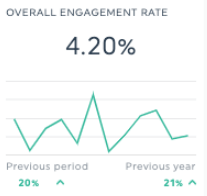
What it is:
Engagement is the way website visitors interact with your brand. Here, we refer to engagement as a broad metric–one that involves website traffic, average time on page, bounce rate, etc.
The ONE thing you can do to improve this metric today:
- Merge inbound with outbound channels
Beauty and cosmetic brand Sugar Lash Pro did a fantastic job scaling organically through word of mouth and endorsements. However, the same can't be said when generating revenue online.
After engaging Adspace to implement a full-funnel organic and paid acquisition campaign on Facebook, Instagram, Google, and YouTube, the brand saw a:
- 154% increase in website traffic
- 77% increase in online revenue, and
- 2119% increase in ROAS
By implementing a full-funnel campaign across paid and organic channels, the agency helped Sugar Lash Pro increase brand awareness, boost sales, and convert new customers.
(ii) CONVERSION RATE

What it is:
Conversion rate (CVR) is the percentage of users who completed a desired action measured against the total number of visitors over a period
The ONE thing you can do to improve this metric today:
- Prioritize content that solves customers' biggest problems
To uncover these topics in your content marketing strategy, go to your best customers:
- Survey your email list to learn more about their goals
- Poke around in community groups to see what's trending
- Poll followers on social media on what keeps them up at night
- Scroll through common feedback or queries sent to support
- Interview salesperson or sales team to unearth prospects’ top questions or objections
Club management has always been one of the top challenges in the health and fitness industry, so it's little surprise that TeamUp's most successful webinar series revolves around fitness business management.
Since it was a topic competitors haven’t covered in depth, TeamUp quickly positioned itself as a leader with its vast library of resources, eventually attracting many sales qualified leads.
"The webinars positioned our company as a thought leader in the industry," says Laia Quintana, the Head of Marketing and Sales at TeamUp. "We saw a significant increase in sign-ups for our schedule management solutions."
(iii) CUSTOMER ACQUISITION COST (CAC)

What it is:
Customer acquisition cost (CAC) is the cost of acquiring a new customer (i.e., marketing and sales efforts in prospecting and conversion)
The ONE thing you can do to improve this metric today:
- Set up an abandoned cart strategy
Try these tactics to improve your checkout page while improving sales numbers and CAC simultaneously:
- Offer guest checkout
- Enable more payment methods
- Include shipping fees right off the bat
- Instill security with "trust boosters" (e.g., customer reviews, money-back guarantee)
- Sweeten the pot with discounts in an abandoned cart email sequence
(iv) CUSTOMER LIFETIME VALUE (CLV)
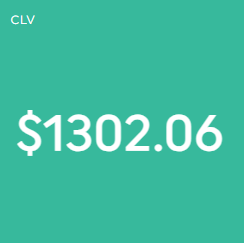
What it is:
Customer lifetime value (CLTV) is the total worth of a single customer throughout their relationship with your business.
The ONE thing you can do to improve this metric today:
- Upsell high-value customers with relevant products
You can only do this with feature-rich marketing automation platforms like Klaviyo.
Boasting advanced segmentation and logic conditions, these tools help you tailor your upsell emails according to customer behavior (e.g., specific purchases, discount code usage, predicted customer lifetime value).
Consider investing in one to build an upsell email sequence.
(v) RETURN ON AD SPEND (ROAS)
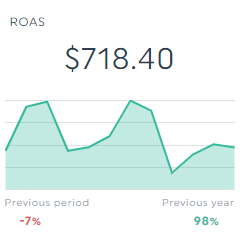
What it is:
Return on ad spend (ROAS) is the revenue you get back for each dollar spent on advertising. Many marketers consider paid ads as both inbound and outbound marketing.
The ONE thing you can do to improve this metric today:
- Diversify your marketing channels
Implement a multi-phase campaign to reach potential customers at different stages of the sales funnel.
For example, if you're an eCommerce store, run a Facebook Live event featuring a brand ambassador. Then repurpose the footage as video ads on Instagram—all with a mix of upper-funnel objectives (reach + video views) and lower-funnel objectives (website conversions + catalog sales).
Despite beating the industry standard, the ROAS for Aurate's influencer marketing campaign fell short of expectations:
- 37% increase in website traffic
- 46% decrease in customer acquisition cost, and
- 103% increase in ROAS
"The biggest lesson we learned is that diversification of marketing channels is essential," says Dan Ben-Nun, CEO and Founder of Adspace, who spearheaded the campaign.
"Although influencer marketing yielded positive results, relying solely on this channel may have limited our ROAS potential."
Why Tracking Inbound Marketing ROI is Crucial (More Reasons from Real-World Brands)
Here are three more reasons to take an in-depth approach to your ROI tracking, according to these leaders:
(i) ACCELERATE CAMPAIGNS BASED ON WHAT THE DATA TELLS YOU
What works for a channel could work in others.
Banzai's on-demand game show demo, which saw a 41% conversion rate at its first launch, continues to generate leads and customers today.
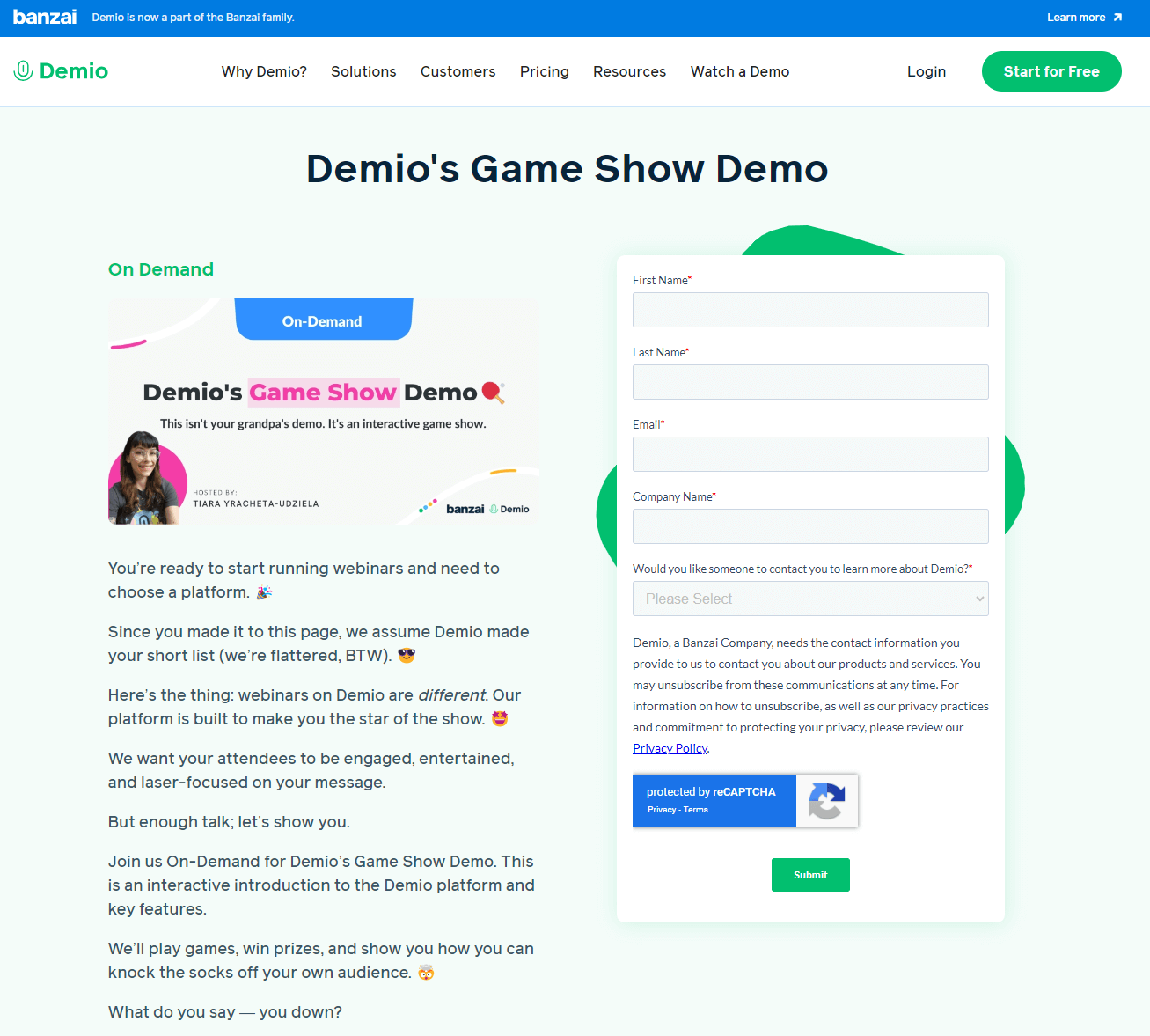
The evergreen content was so successful, says Rachel Meyrowitz, Director of Demand Generation, and Tiara Yracheta-Udziela, Customer Marketing Manager, that they repurposed it into various forms on multiple platforms.
Had the duo not tracked the demo's ROI in the first place, they probably would not have tapped into a completely new audience across these channels.
(ii) ADJUST MARKETING BUDGET TO BEAT THE ODDS
ROI determines the next step, like whether you should ditch or double down your efforts in the next campaign.
Unlike its video demo, Banzai's organic social media campaign didn't fare as well.
"I learned organic social is great for brand and product awareness," says Meyrowitz when asked about the experience. "But not for lead generation."
With this insight from ROI tracking, Meyrowitz can better spend her efforts on high-performing channels and tilt the odds of winning.
(iii) SPOT TOP-PERFORMERS
Tutorial-based content brought on the highest engagement, sales, and ROI for eCommerce brand, Irresistible Me.

The inbound marketing campaign, which shows how to use hair extensions and wigs, resonated with its target audience. By showing its hair products in action, consumers can quickly visualize what it's like to use them in their lives.
Surprisingly, a celebrity influencer endorsement campaign generated the lowest ROI.
"We learned our customers value authenticity and practicality over star power," shares Kate Ross, part of the marketing team at the beauty brand.
"This taught us to focus more on real customer stories and practical uses of our products."
How to Create an Inbound Marketing Report on DashThis
A single tool can't measure ROI alone.
It requires deeply connected integration with other tools to be truly effective.
TASK, for instance, uses Heap Analytics, Factors, and Segment to understand its target accounts' content preferences, multi-channel behavior, and engagement spikes.
By configuring these tools into one place, says Mark Hayes, the Head of Growth, he can "swiftly engage with hot prospects and filter out less promising leads, boosting ROI as the campaigns become more targeted and efficient."
If you're also looking to gather your entire marketing data into a single interface like Hayes’, consider using DashThis, the easiest reporting tool.
Here's how it works:
- Connect your data source(s) with DashThis (e.g., Google Analytics, LinkedIn)
- Select a pre-made report from 40+ free report templates
- Choose your metrics in Preset Widget
DashThis will automatically gather the metrics into the report. Drag and drop them to form a cohesive look.

Customize the report accordingly.
Let’s say you want to add paid search as part of your inbound marketing efforts, but management is skeptical.
Click Static Widget > Comment and make your case accordingly.

Click Save.
If you want to include smaller chunks of text, like a brief explanation for an erratic graph, opt for our built-in notes widget.
Hover to the metric and click Add Note.

Include your text and click Save.
You can also use the notes widget when:
- Defining common marketing acronyms (e.g., SEO > search engine optimization, PPC > pay per click, CTAs > calls-to-action)
- Recommending next steps in upcoming campaign (e.g., content creation based on buyer personas instead of blindly copying competitors’ strategy)
- Explaining how X metric impacts Y metric (e.g., higher keyword rankings increase traffic and number of leads)
Once you’re done, schedule an automated email dispatch.
Here’s how it works:
- Hover to the Sharing Options icon on the top right
- Click Share by Email
- Set the dashboard period and frequency
- Click Schedule
Add an optional note and include the report as a PDF attachment for good measure.
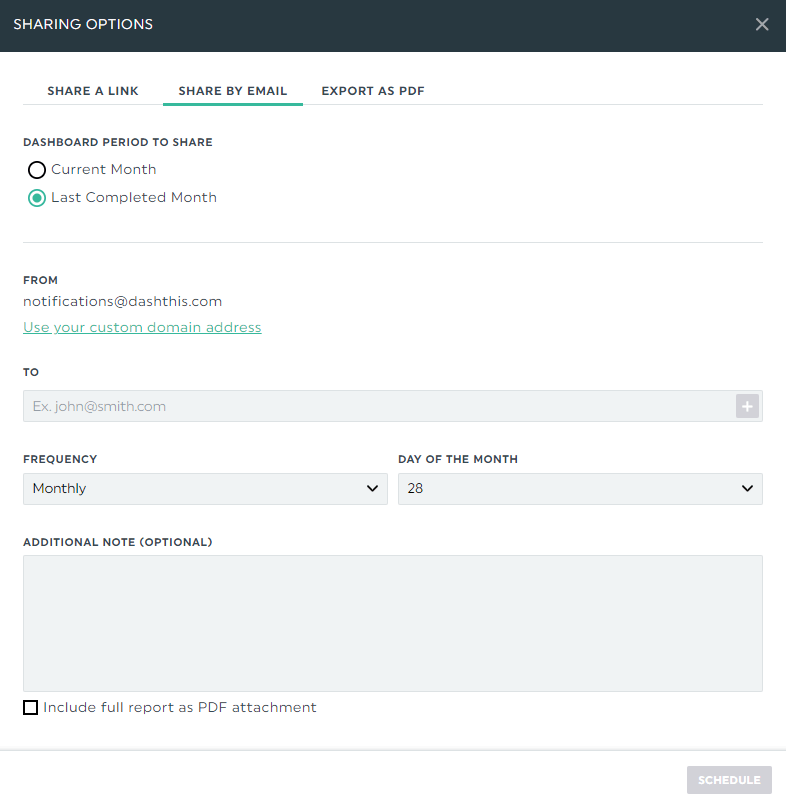
Alternatively, send over the report via a shareable URL link.
Both options let stakeholders view the ROI report in real time.
Now you can analyze your entire inbound marketing performance in a single interface, distill insights in a snap, spot growth opportunities with no guesswork, and gain back hours of time.
Start your free 15-day trial to automate your inbound marketing ROI reports today.
Digital marketing report template
An effective inbound marketing strategy delivers a continuous positive ROI.
Note the digital marketing dashboard below.
Visualize how SEO impacts your bottom line, determine which landing page attracts potential customers, and uncover which best-performing messages to replicate in other owned channels.
Use this inbound marketing report to measure your progress and repeatedly and reliably grow your revenue without hurting ROI.
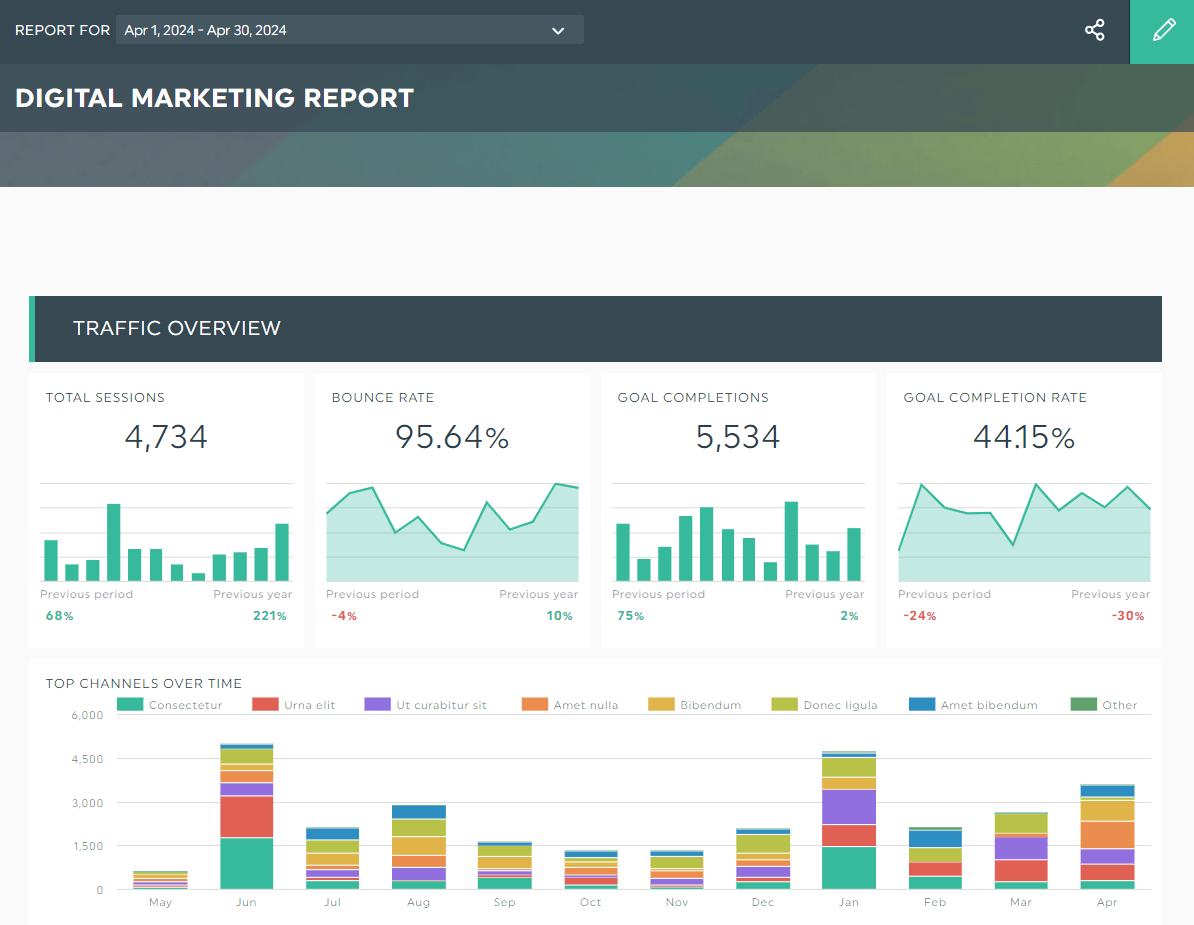
Grab this free inbound marketing ROI report template with your own data!
Automate Your Inbound Marketing ROI Report with DashThis Today
ROI goes beyond tracking monetary returns in the long haul.
Consider your unique goals to determine what positive gains you want to accomplish in your marketing campaigns, while taking the factors above into account.
More importantly, track the metrics we recommended alongside your ROI. You’ll gain a clearer picture of the customer's journey this way.
And when you’re ready, track your overall inbound marketing efforts on DashThis, the easiest reporting tool.
Automatically gather your entire marketing data across your favorite channels into one beautiful report. Pricing starts at $42/month when billed annually. Start your free 15-day trial today.
Ready to track your inbound marketing ROI?
Read More
Don’t miss out!
Automate your reports!
Bring all your marketing data into one automated report.
Try dashthis for free

